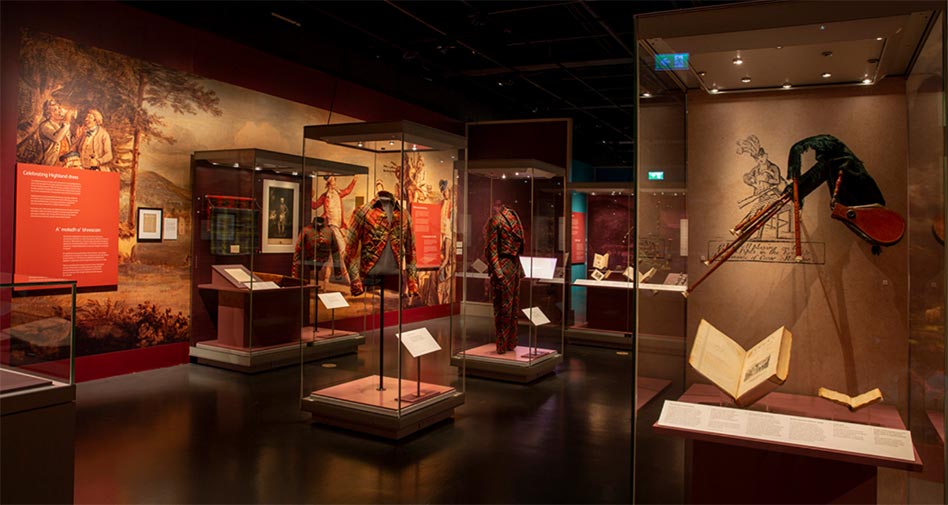Moving beyond token words
Establishing new approaches to Gaelic in Scotland’s National Museum
Professor Hugh Cheape and Dr Domhnall Uilleam Stiùbhart use their research to influence public perceptions of the critical role Gaelic culture played in creating the Romantic movement.
Unit of assessment | Modern Languages and Linguistics

Romantic Highland imagery dominates worldwide perceptions of ‘Brand Scotland’, despite often being discounted as mere ‘invented tradition’ by academics and public alike.
Provoking fresh debate by tracing this iconography back to authentic Gaelic culture, research by Professor Hugh Cheape and Dr Domhnall Uilleam Stiùbhart from Sabhal Mòr Ostaig, a partner of UHI, materially shaped the National Museum of Scotland’s major 2019 exhibition on the subject, ‘Wild and Majestic | Fiadhaich Glòrmhor’.
Never before had a leading Scottish institution made such extensive use of Gaelic language and perspectives, overhauling institutional policy and practice and setting a precedent now being adopted by other Scottish museums. Its success has heightened awareness of the value of Gaelic culture and scholarship, and marks a significant advance for the Gaelic community.
Challenging traditional historical perspectives, Cheape’s innovative interdisciplinary research on Highland material culture – in particular on the origins of iconic symbols of the region such as tartan and bagpipes – emphasises the dynamism and self-confidence of early modern Gaelic culture and its receptivity to influences from mainland Europe.
Stiùbhart’s research focuses upon how late eighteenth-century Romanticism was influenced by Scottish Gaelic culture through the crucial figure of James ‘Ossian’ Macpherson. Blending older Gaelic heroic ballads with contemporary tragic love songs, Macpherson composed – or counterfeited – supposedly ancient epic prose poems that proved wildly popular with readers throughout Europe and beyond.
The exhibition’s success has set a positive, productive precedent for using Gaelic texts, voices, and perspectives in Scottish museums and galleries, going beyond mere tokenism. These developments are bringing Scottish artistic and heritage institutions into line with international standards for best practice in bilingual interpretation, as well as supporting appropriate – and long overdue – institutional recognition for Gaelic language, history, and culture.
“Diofraichte bho thaisbeanadh eile a chunnaic mi” | “Different from any other exhibition I’ve seen”
– feedback from S3 Gaelic-medium student, James Gillespie’s High School, 2019
Research team
Relevant websites
Follow on
- Twitter | @SabhalMorOstaig
- Facebook | @sabhalmorostaig